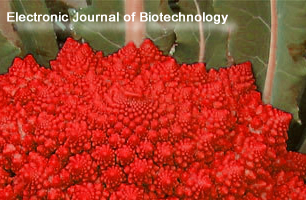Abstract
Deschampsia antarctica (DA), the only species in the Gramineae family endemic to the Antarctic territory, is characterized by a combination of high levels of free endogenous phenylpropanoid compounds under normal in situ and in vitro growth conditions. In this article, we describe the design and use of a specific temporary immersion photobioreactor to produce both increased DA biomass and secondary metabolite accumulation by UV-B elicitation during cultivation. Three min-long immersions in an induction medium applied every 4 hrs at 14ºC ± 1 and 20/4 hrs light/darkness photoperiod increased DA biomass production over previous in vitro reports. Biomass duplication was obtained at day 10.7 of culturing, and maximum total phenolics and antioxidant activity were observed after 14 day of culturing. The addition of UV-B radiation pulses for 0.5 hrs at 6 hrs intervals increased total phenolics and antioxidant activity more than 3- and 1.5- fold, respectively, compared to controls with no UV-B. Significant accumulation of scopoletin, chlorogenic acid, gallic acid and rutin was found in these plantlets. This is the first bioreactor designed to optimize biomass and phenylpropanoid production in DA.
Upon acceptance of an article by the journal, authors will be asked to transfer the copyright to Electronic Journal of Biotechnology, which is committed to maintain the electronic access to the journal and to administer a policy of fair control and ensure the widest possible dissemination of the information. The author can use the article for academic purposes, stating clearly the following: "Published in Electronic Journal of Biotechnology at DOI:10.2225/volXX-issueX-fulltext-XX".
The Copyright Transfer Agreement must be submitted as a signed scanned copy to biotec@ucv.cl. All authors must send a copy of this document.
